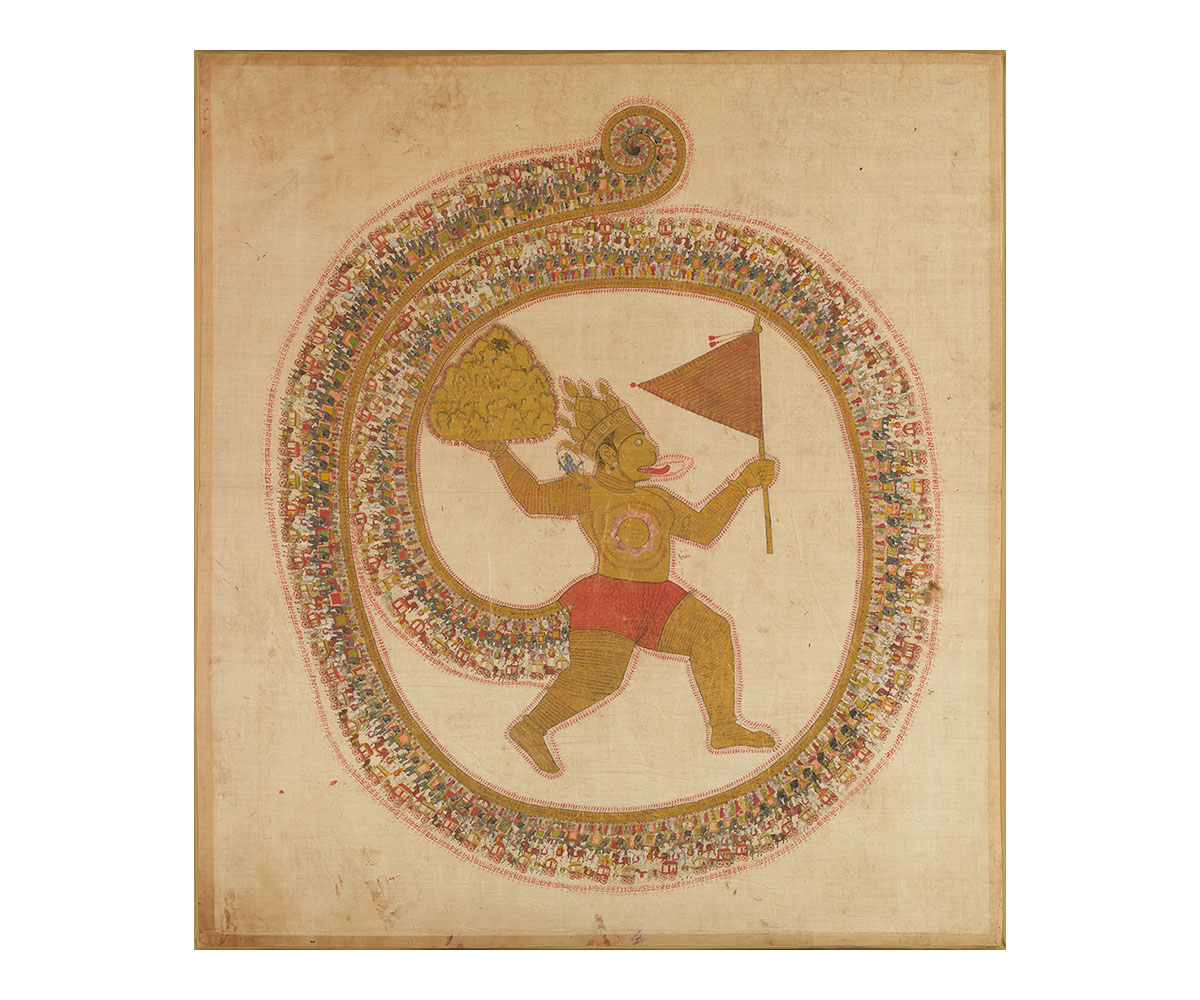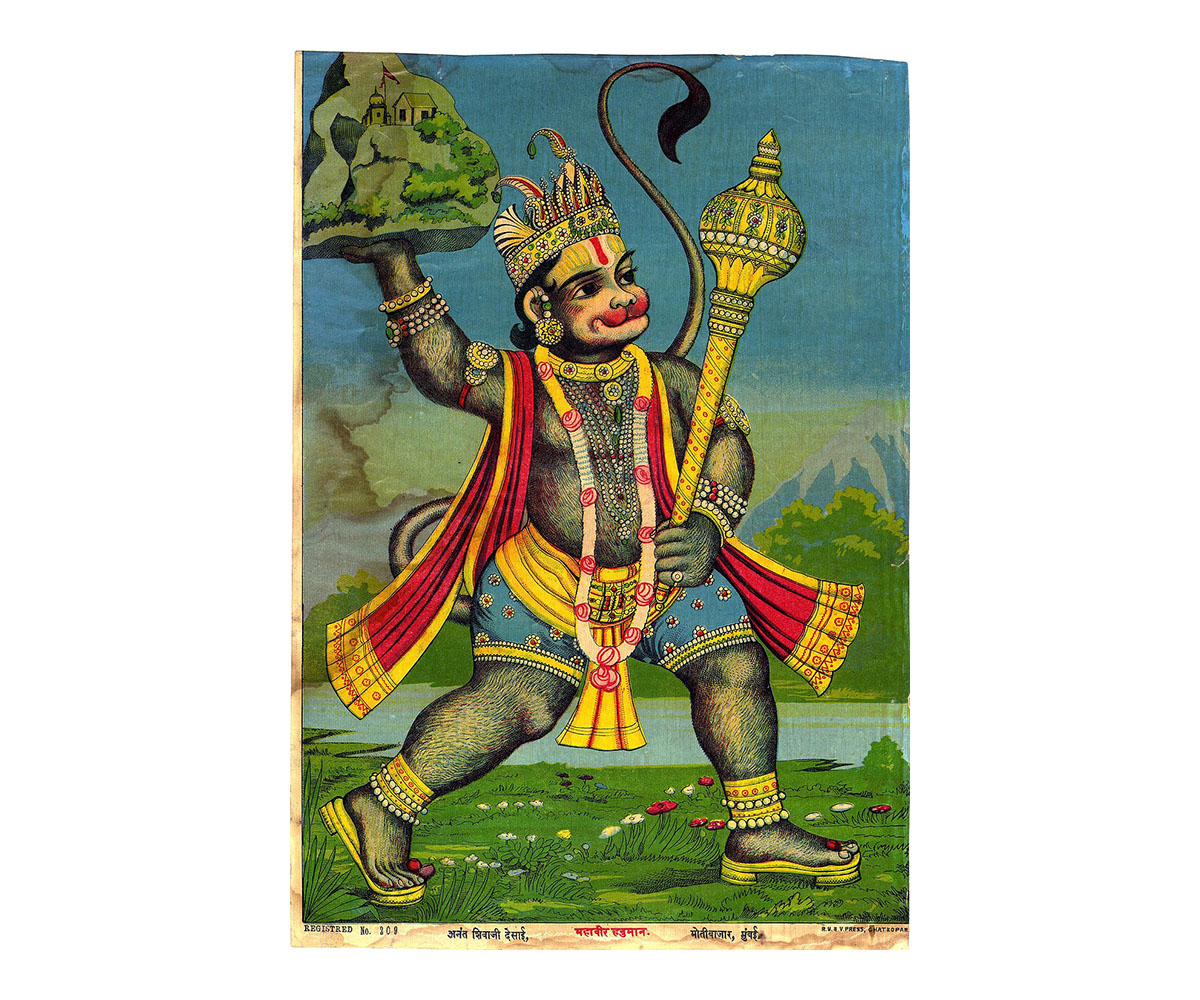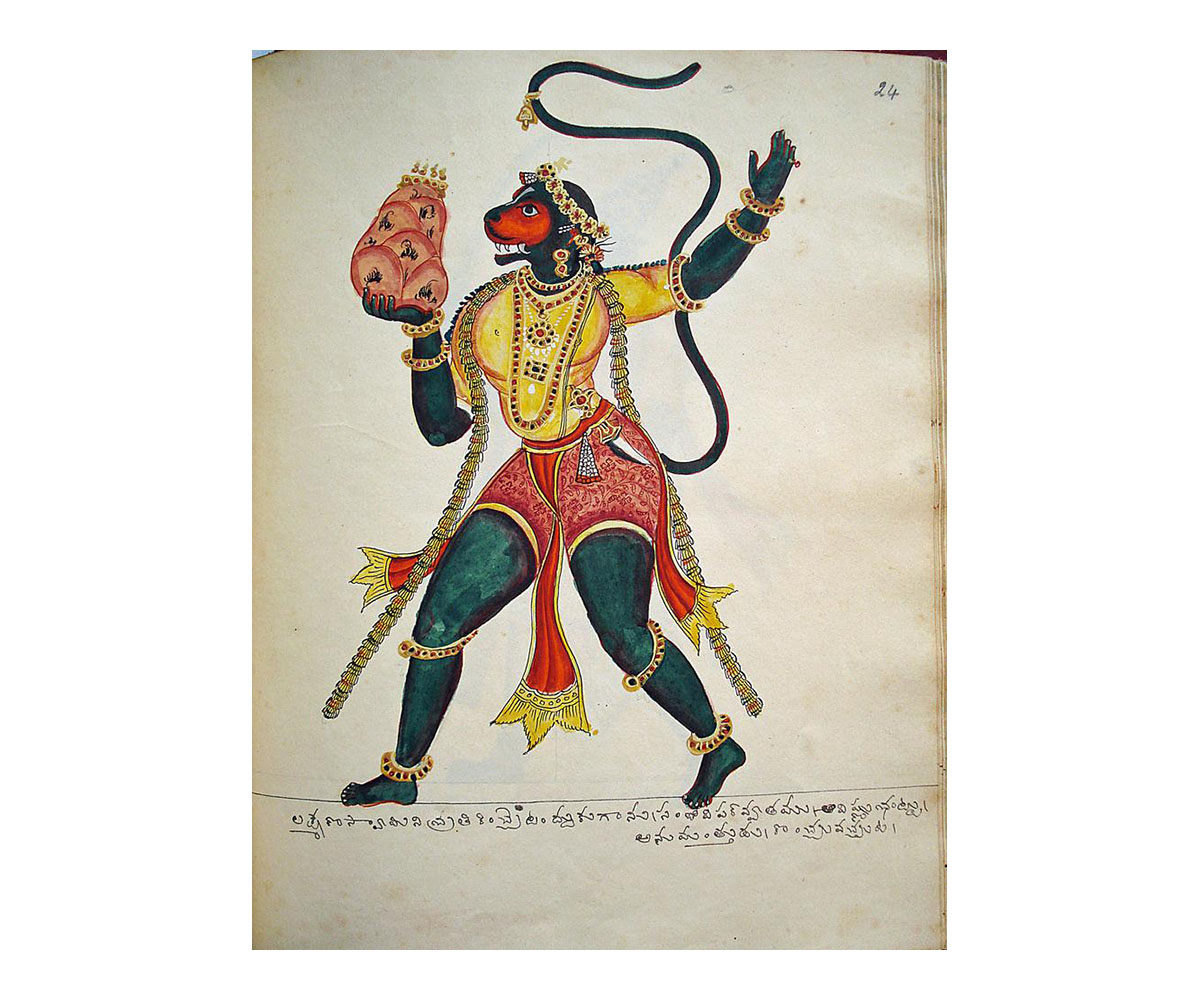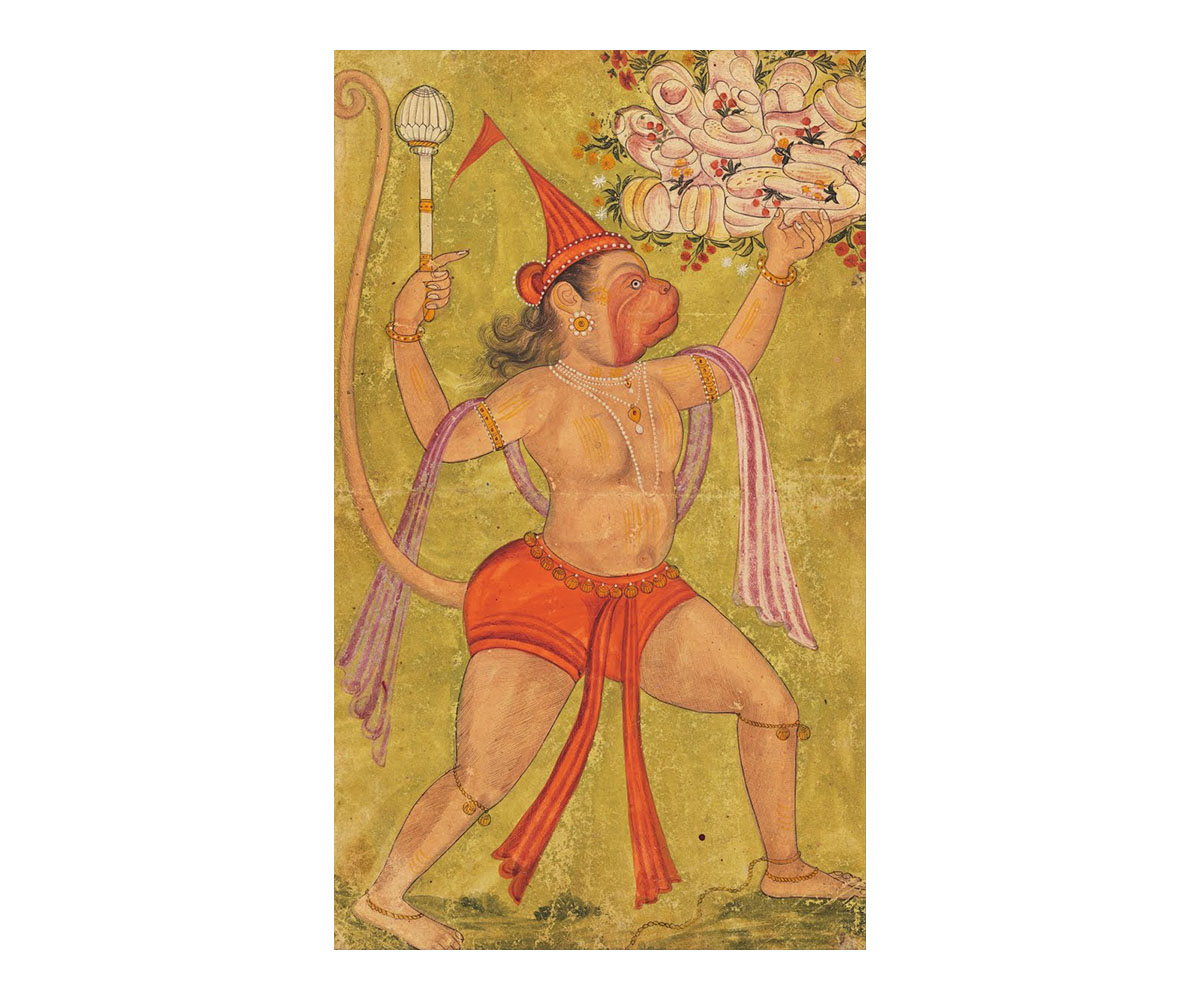PERSPECTIVES
Tales of Power and Prowess: Hanuman Bearing a Mountaintop with Medicinal Herbs
At first glance what appears to be a devotional painting of the Hindu deity, Hanuman, reveals to us much more about strength, military prowess and loyalty upon closer inspection. This narrative image, through a simple figurative illustration, depicts a story celebrating Hanuman’s most heroic feat — carrying the Mountain Vindhya.
During the battle between the army of the king Ravana, and Rama’s animal army, the latter’s brother, Lakshmana, is gravely wounded. In an effort to revive him, Hanuman sets out in search of Sanjeevani, a medicinal herb that was believed to have healing properties and could revive patients in situations where death was certain. Leaping over the ocean and the landmass of India, Hanuman arrives at the mountain of herbs in Uttarakhand, on the slopes of the Himalayas. Unsure of which plants to gather, he breaks off the entire mountain peak and carries it through the sky, back to Rama.
In this painting, Hanuman appears to carry the mountaintop in his right hand, effortlessly. On his right shoulder sits a diminutive figure of Rama, perhaps an allegorical symbol of his devotion and loyalty to his Lord. A significant portion of the composition is taken up by Hanuman’s tail encircling his body. The tail carries Rama’s army, with a repeated pattern of elephants, infantry and horse carriages, a unique aspect that is not found among the commonly seen images of the Hanuman carrying the mountain. Hanuman is also depicted as simultaneously carrying but also enveloped in Rama’s army. This is emblematic of the critical importance of Hanuman’s heroism and devotion in Rama’s eventual victory.
While Hanuman is known most commonly for his association with Rama, he is worshipped across several communities in India as a god of great importance in his own right, and as the epitome of strength and vitality. Folklore describing his adventures and prowess, rather than his service to Rama, have appealed to worshippers. He also frequently appears as the protagonist of several vernacular tales, epic poems, and street plays and performances. The sacred connotations of monkeys in India, commonly fed in the precincts of temples, can be attributed to the importance of Hanuman as a deity.
The worship of Hanuman was not well documented until the 10th century, and he was considered a minor figure in the Hindu pantheon. Nevertheless, the ubiquitous presence of the deity in contemporary visual culture suggests that he plays a far more important role in religious practices. Mass-printed “god posters” have proliferated in the past century across India. During a visit to any local bazaar poster shop, one can encounter numerous images of Hanuman, popularly depicting this story of carrying Mount Vindhya. The widespread dissemination of the image of Hanuman among the masses therefore reveals a deeper devotional tendency that goes beyond his role in the Ramayana.









